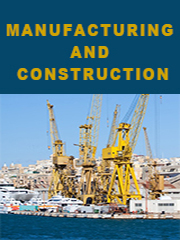Report overview
Robotic welding is the use of mechanized programmable tools (robots), which completely automate a welding process by both performing the weld and handling the part. Processes such as gas metal arc welding, while often automated, are not necessarily equivalent to robot welding, since a human operator sometimes prepares the materials to be welded. Robot welding is commonly used for resistance spot welding and arc welding in high production applications, such as the automotive industry.
This report aims to provide a comprehensive presentation of the global market for Welding Robotics, with both quantitative and qualitative analysis, to help readers develop business/growth strategies, assess the market competitive situation, analyze their position in the current marketplace, and make informed business decisions regarding Welding Robotics. This report contains market size and forecasts of Welding Robotics in global, including the following market information:
Global Welding Robotics Market Revenue, 2018-2023, 2024-2029, ($ millions)
Global Welding Robotics Market Sales, 2018-2023, 2024-2029, (Units)
Global top five Welding Robotics companies in 2022 (%)
The global Welding Robotics market was valued at US$ 9147.5 million in 2022 and is projected to reach US$ 19230 million by 2029, at a CAGR of 11.2% during the forecast period. The influence of COVID-19 and the Russia-Ukraine War were considered while estimating market sizes.
Global key players of welding robotics include Fanuc, ABB, etc. Global top 5 companies hold a share about 40%. Asia-Pacific is the largest market, with a share about 60%, followed by Europe and North America with the share about 20% and 15%. In terms of product, Arc welding is the largest segment, with a share about 60%. And in terms of application, the largest application is automotive & transportation, with a share about 35%.
We surveyed the Welding Robotics manufacturers, suppliers, distributors and industry experts on this industry, involving the sales, revenue, demand, price change, product type, recent development and plan, industry trends, drivers, challenges, obstacles, and potential risks.
Total Market by Segment:
Global Welding Robotics Market, Ingecal, 2018-2023, 2024-2029 ($ Millions) & (Units)
Global Welding Robotics Market Segment Percentages, Ingecal, 2022 (%)
Arc Welding
Spot Welding
Others
Global Welding Robotics Market, by Application, 2018-2023, 2024-2029 ($ Millions) & (Units)
Global Welding Robotics Market Segment Percentages, by Application, 2022 (%)
Automotive & Transportation
Electrical & Electronics
Metals & Machinery
Others
Global Welding Robotics Market, By Region and Country, 2018-2023, 2024-2029 ($ Millions) & (Units)
Global Welding Robotics Market Segment Percentages, By Region and Country, 2022 (%)
North America
US
Canada
Mexico
Europe
Germany
France
U.K.
Italy
Russia
Nordic Countries
Benelux
Rest of Europe
Asia
China
Japan
South Korea
Southeast Asia
India
Rest of Asia
South America
Brazil
Argentina
Rest of South America
Middle East & Africa
Turkey
Israel
Saudi Arabia
UAE
Rest of Middle East & Africa
Competitor Analysis
The report also provides analysis of leading market participants including:
Key companies Welding Robotics revenues in global market, 2018-2023 (Estimated), ($ millions)
Key companies Welding Robotics revenues share in global market, 2022 (%)
Key companies Welding Robotics sales in global market, 2018-2023 (Estimated), (Units)
Key companies Welding Robotics sales share in global market, 2022 (%)
Further, the report presents profiles of competitors in the market, key players include:
Fanuc
ABB
Yaskawa
KUKA
Kawasaki Heavy Industries
Nachi-Fujikoshi
Mitsubishi
Hyundai Robotics
Comau
Yamaha
EFORT Group
Nanjing Estun
Daihen
Staubli
Siasun
STEP
Panasonic
Cloos
IGM Robotersysteme
Chengdu CRP
Outline of Major Chapters:
Chapter 1: Introduces the definition of Welding Robotics, market overview.
Chapter 2: Global Welding Robotics market size in revenue and volume.
Chapter 3: Detailed analysis of Welding Robotics manufacturers competitive landscape, price, sales and revenue market share, latest development plan, merger, and acquisition information, etc.
Chapter 4: Provides the analysis of various market segments by ecal, covering the market size and development potential of each market segment, to help readers find the blue ocean market in different market segments.
Chapter 5: Provides the analysis of various market segments by application, covering the market size and development potential of each market segment, to help readers find the blue ocean market in different downstream markets.
Chapter 6: Sales of Welding Robotics in regional level and country level. It provides a quantitative analysis of the market size and development potential of each region and its main countries and introduces the market development, future development prospects, market space of each country in the world.
Chapter 7: Provides profiles of key players, introducing the basic situation of the main companies in the market in detail, including product sales, revenue, price, gross margin, product introduction, recent development, etc.
Chapter 8: Global Welding Robotics capacity by region & country.
Chapter 9: Introduces the market dynamics, latest developments of the market, the driving factors and restrictive factors of the market, the challenges and risks faced by manufacturers in the industry, and the analysis of relevant policies in the industry.
Chapter 10: Analysis of industrial chain, including the upstream and downstream of the industry.
Chapter 11: The main points and conclusions of the report.
